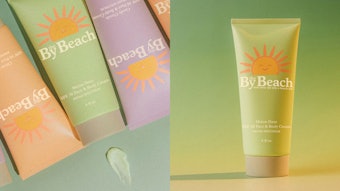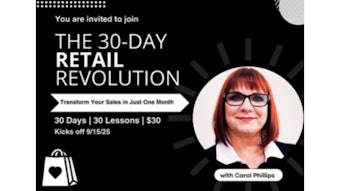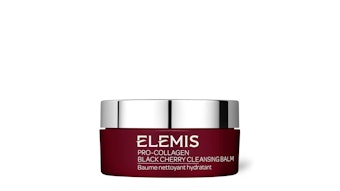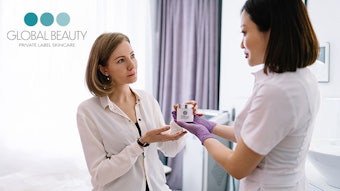If a business is not growing, it could be dying. There are many steps you can, and should, take to check on the health of your spa. Although you may worry about the competition around the corner as well as the unstable economy, these concerns can prevent you from taking a closer look inside your own facility’s doors. Creating and sustaining growth becomes even more important under the burden of conditions that are beyond your control. There are three benchmarks that every business must meet in order to sustain itself: service and sales, growth and, most important, profitability.
At your service
The first goal toward growing and staying profitable is to keep your service rooms fully booked. Think like the airlines: They only make money when they fly full planes. Advertise your open appointments in creative ways, such as sending text messages about open appointments to your clients, or advertising them visually on-site. Create a sandwich board with materials that can be easily edited so that you can add and delete appointment times and services that are available. The board should be positioned at the front door or in the reception area so that clients can see which treatments are available for same-day service. Some spas refer to their clients at “guests,” and this can help spa team members treat them as such. The important thing, however, is not what you call them, but how you treat them and make them feel during their spa visit.
Sell away
Because many estheticians feel as if they are technicians and not salespeople, they may not realize the importance of retailing. Explain to them that the best form of advertising for your facility is word-of-mouth. Clients with beautiful, glowing skin are your walking business cards, and their referrals could maintain your spa forever and ever—but not if they can’t maintain the treatment results after they leave the spa. Even if they make appointments regularly, without administering the products the esthetician used and recommended during the days in-between, then their work is really for nothing.
Product recommendations. Every business needs to think about the percentage of clients who are purchasing retail and, of that percentage, how much retail are they buying. Remember, more than 60% of purchases made in the spa are based on recommendations from the esthetician and use of the product during the client’s treatment. Consider creating easy product recommendation and selling systems for everyone in the spa to follow. Providing team members with prescription pads and face charts will allow them to better serve your clients so that they can recreate their experience at home.
Retail environment. If you are going to sell retail in order to sustain yourself, it is crucial to study how other professionals have mastered product positioning, lighting and storyboarding. On retail shelves, testers that are partnered with signage explaining a product’s features and benefits should be positioned 5 feet 4 inches from the ground—the eye level of the average female consumer. The lighting should make the shelves inviting. Master retailers will tell you that no one wants to buy the last item on a display. Because of this, shelves should be kept fully stocked on an ongoing basis. Positioning the retail environment in a location within your spa that has the most traffic also will help support retailing. Don’t keep products behind the counter where clients can’t touch them and have to request your assistance. Consider designing your retail area for value-added services in order to introduce clients to products through hands-on treatments, such as hand and arm massages, quick makeup touch ups and complimentary hand facials.
Gift cards. Gift cards that don’t expire are the wave of the future; clients can spend them any way they prefer. Every company loves gift cards because they are cash infusions that help keep business afloat. They should be promoted throughout the year for an all–occasion purchases, as well as during every holiday season, including Valentine’s Day and Mother’s Day, and for graduations, weddings, birthdays, anniversaries and days of recognition, such as professional administrative assistant’s day. Gift cards must have good visibility on your spa’s Web site and, ideally, could be purchased online.
Retain and expand
Your growth and profitability benchmarks will depend greatly on your retention rate and retention benchmarks will vary depending on your business model. If you operate a day spa, where people come for service and leave, you need to maintain a 70% retention rate. A destination spa’s rate is much lower because it has numerous guests arriving every day. No matter your location—even if it is a convention capital such as Las Vegas or Orlando—it is important for service providers to work on the local population, hotel concierges and local business people to foster referrals. The key to retention with medical spas is to build a clientele of postoperative patients who you can continue to provide services to long after their surgical procedure. Consider partnering with the local medical spa so that you can both mutually benefit from this booming sector of the skin care industry.
Medical partnerships. Keep abreast of what medical spa services are offered, as well as what physicians are performing on an outpatient basis. It will keep you and your staff informed and up-to-date in the industry, and allow for the recommendation of new treatments and services to your clients.
Taking the partnership model a step further, a growing trend is to create a room for a physician on the spa’s premises for consultations with clients. The details can be worked out so that it is economically feasible. A great way to build both businesses is to partner in hosting workshops and events.
Mass or class? How you market your spa is your strategic point of difference to benchmark growth. Today, every product and service is either mass or class. One example of a mass retailer is Procter & Gamble. It is legendary in corporate America and is great to its people. The main focus of mass market retailing is to be the most economical and affordable supplier of product for the consumer. Its distribution channels stretch far and wide, with brands that are sold in Kmart, Wal-Mart, Target and others.
On the other side of the coin, Estée Lauder is an example of a class retailer. Its brands can be found at Neiman Marcus, Saks Fifth Avenue, Macy’s and Nordstrom. Class is more service-oriented and comes with team members who devote time, energy and effort to selling a whole range of products that offers many options to the consumer.
What are the expectations of clients in these two environments? Mass is inexpensive, does not provide value-added services and is considered to provide more standard, basic items. With class, consumers expect options: think of the fragrance area of your favorite department store. In the spa business, clients want to choose from a number of different facials, manicures, body treatments and massages. Consider studying your menu of services and service systems to determine where you can create exceptional points of difference in order to maintain or elevate your desired level of class. Make sure your current and future staff members understand your service-level expectations.
Technology. Technology is also playing an increasingly important role in service industries as clients prove over and over again that they don’t have time to wait. You have to continually update your technological systems in order to provide world-class service. Overhaul your booking system because no one wants to be left on hold anymore, and make peoples’ lives easier by offering online booking. Text message or e-mail appointment confirmations, and stay on top of the latest technologies; improvements are being made every day. Consider asking your clients how they like to be contacted: via mail, e-mail, cell phone, home phone or text messaging, and if they’d be interested in learning about services that become available before or after their scheduled appointment. Along the same lines, remember to continually upgrade and change your Web site so that viewers enjoy visiting it more and more. Consider trading services with a client who has Web design experience to keep your site updated. Daily, weekly and monthly maintenance is extremely vital to the success of a great Web site.
The profit
The No. 1 mistake made by many spas is lack of capital. Cash flow is so important because, as you run into hurdles—and all businesses do—you must be able to sustain your way through them. Proper financing up front is vitally important so that you can have the cash on hand to infuse into your business as needed. Consider approaching your bank for a loan or enlisting a business partner who is willing to provide substantial capital as needed.
Managing hard times. When cash flow becomes a problem, one of the first things management does is cut corners—and this is the worst thing that can happen. One of the first line items to go typically is advertising and marketing. Next in line is personnel, and finally services begin to be removed, along with anything management deems unnecessary. Owners should be very careful about cutting expenses that might further damage the business and lessen existing clients’ perception of the spa’s value.
The first thing you should do when in financial straits is seek professional advice. A great and inexpensive source is your local chamber of commerce. Usually, many retired professionals donate their services, expertise and skills to help companies in need. Consider tapping into an organization, such as the International Spa Association (ISPA), which is a recognized worldwide authority of the spa industry. It has many resources available to assist the struggling spa owner.
Salaries and rent. Two of the largest expenses incurred by any spa are salaries and rent, and they are the most important lines on your profit-and-loss statement on which to focus. Make sure you remain within the industry benchmarks. Along with ISPA, equipment and product manufacturers should be able to help provide you with target percentages and industry standards. If your numbers do not align with your peers’, a ripple effect will occur throughout your organization making it practically impossible to be profitable.
Go back to class. If you are just starting out in the spa industry, take a business class that features speakers who have had great success, and are sharing their knowledge and expertise. You might also think about hiring a consultant—someone not in your competitive area, but an owner of a company that you admire and would want to model your own after. Once you find a consultant, consider shadowing their business for two days to see their plans in action.
A student for life
You must continually inspect what you expect. You are a student for life. You should always be reading, learning and studying in order to find out the newest, best and most feasible ideas, systems or technologies. And when you find something interesting, examine your spa to see if there’s a place to incorporate what you have learned. It is so important to use whatever pieces of information you can to help sustain the growth of your business.










